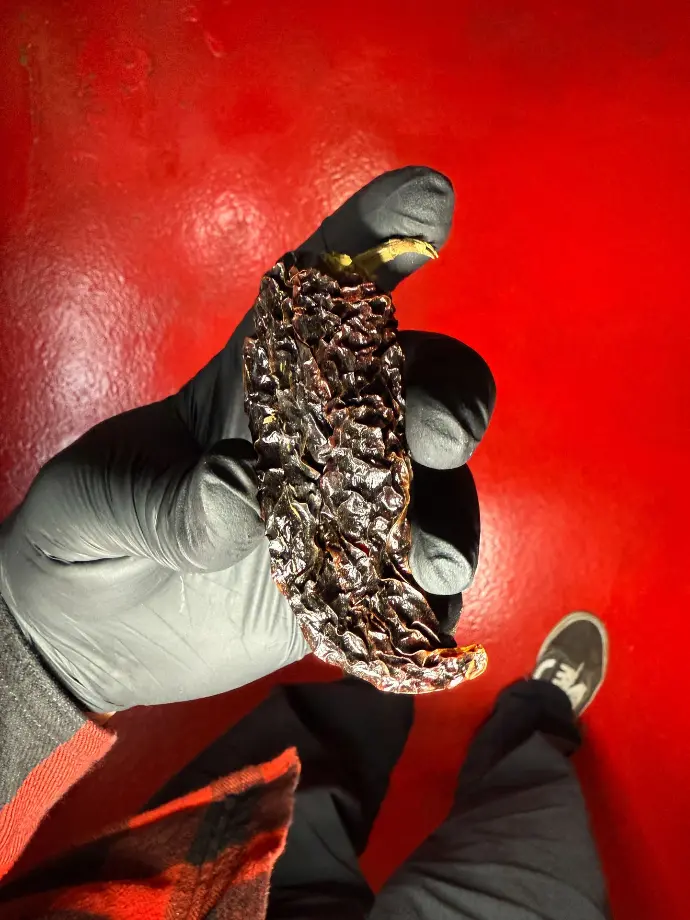Firstly, contrary to what you might think, Chipotle Morita is probably the most difficult pepper to source, despite being one of the most popular in the world. Indeed, it's a paradox that quality chipotle chillies are in short supply due to high demand, particularly in the USA, resulting in mass production that favours quantity over quality. The lack of rigorous quality control exacerbates this problem, resulting in products that are often adulterated or of lesser flavor. That's why most Chipotle hot sauces on the market are pretty bad.
It was in 2020, when I was working on the FUMADO recipe, that I realized the problem. My first prototypes were made from Chipotle chillies that a friend had brought back from Mexico. He'd bought them at a market along with other dried chillies such as Ancho, and they were excellent. But I had very few, and when I wanted to improve my recipe I had to buy new Chipotle. That's when things got complicated; I ordered them from three different places and received three kinds of chillies... all Chipotle theoretically, but of very mediocre quality and with very disparate smells and tastes. One of them smelled of alcohol, another was very dry and had traces of mould, the third was okay but very clear and I couldn't find the fruity flavour of the chillies I'd used up until then.
I discovered that chilli sellers in general know absolutely nothing about chillies and that it was up to me to develop an expertise, through empirical experience.
It was this experience that prompted me to look for an alternative smoked chilli to perfect the recipe for the SMOKED Pimenton de la Vera. Pimenton has all the qualities that Chipotle lacks, for one simple reason: it's a controlled designation of origin. Read more about Pimenton here.
Today we've built up a viable pipeline for the good Chipotle, which allows us to use it from time to time in seasonal recipes and limited editions, and we're very happy about that, because it's a pepper we love.
But what is it really?
There are two main varieties of chipotle:
- Meco chipotle, which is lighter, grayish-brown in color, and drier. It is smoked for longer and is often used in traditional Mexican cuisine.
- Morita chipotle, more common in the USA, which is darker, reddish and less smoky. It retains more moisture and has a fruitier flavor, and is our favorite by far.
Morita is usually smoked with pecan wood, while meco is often smoked with other types of wood such as oak.

There's a legitimate suspicion that some low-quality chipotle peppers are treated with flavourings or smoke extracts, or smoked with far less noble materials such as treated wood, pallets, green waste or even plastics.
It's a problem of fraud comparable to that seen in the industrial production of Scarmozza in Italy and many other smoked-flavored products. Price is often an indication of quality.

Taste.
Chipotle Morita has a rich, complex aroma, combining deep notes of woody smoke with a subtle sweetness reminiscent of roasted cocoa and dried fruit.
Its lightly caramelized fragrance is reminiscent of ripe plums and raisins, with an earthy, spicy hint of blond tobacco and aged leather.
In the background, scents of roasted chili and a touch of roasted hazelnut reinforce its warm, enveloping character.
Text & images by Thibault Fournal.
Copyright SWET 2025.